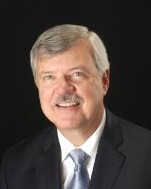Keith Ross, chief executive officer of alternative trading system PDQ Enterprises, spoke to Traders Magazine about high-frequency trading and issues related to rapid trading. Ross, a former options floor trader and strategist, was an early partner at Getco, an early adopter of high-frequency techniques.

>> On whether or not high-frequency trading is a problem for institutional investors
“The way I look at it is this: What is the cost of investing $1 million in the marketplace now versus 2005, 2000 and 1995? What is the trade-cost analysis here? I look at market impact and the commission. Certainly if you’re Joe Retail Investor, it’s never been cheaper to trade. Nothing comes close. In fact, I’d argue that the cost of investing has come down as fast as the speed of the trade processing trading chip has gone up. I think we have great capital markets and the technology from the HFT guys has driven those efficiencies. There are places where they can’t function well, such as the block business, but you can’t compete with them as they trade for a fraction of the rebate. They are incredibly great risk managers; that is what makes them incredibly efficient. The good HFT firms very rarely have losing models or they lose at best $50 to $100 a trade, and these firms very rarely have losing trading days where they don’t make any money.”
>> On the benefits of HFTs
“Are they a problem? I don’t think so. Thanks to them, it’s never been cheaper to execute a trade. The cost to the investor has gone down, and that has been beneficial to the market. I think they have been great for the market.”
>> On HFT market share
“The number has come down a little—whether they do 50 or 60 percent of the volume. But that is not the right metric to look at. It’s not the right thing to worry about if high-frequency guys trade 55 or 60 percent of the market. The thing to be worried about is, they place 97 percent or more of the orders that are in the marketplace. They are all the liquidity. If the regulators do something that really throws a wrench in their spokes, there will be no market. They trade 55 or 60 percent of the market, but for every three orders they trade they place 100 orders. So to get 60 percent of the orders, they place 30 times that in the marketplace. That is available liquidity when it is there—and if that goes away, it will be astounding how poorly the market will function.”
>> On the recent trend of anti-HFT technology and trading venues
“One of my theories of market structure is that as you start to cull out market participants through some sort of restriction, you’re decimating the quality of the market. That is because the high-frequency guys are the ones who are going to trade with you when you really want to trade. And to actually find the other side with a quiet day and quiet market—the probability you trade with them is smaller. But at the end of the day, especially when it is busy, these guys will be trading with you. The idea of finding a natural contra is somewhat romantic. Some venues have been good at it, but I think they’ve reached their saturation point.”
>> On HFTs filling the role left vacant by prop traders
“The question here really is, do the HFT guys fill in that liquidity? Certainly, the reluctance of the Street to commit capital for trades is part of this equation, decimalization is another and a third is the inability of firm market-making desks to be able to trade a name successfully. The HFT group can trade efficiently but only in relatively small size in the small-cap end of the spectrum. When the tick size was larger and the market-making division of an investment banking firm could make money or break even in trading the stock, then the firm could provide investment banking services and liquidity in the name. A 5-cent or 10-cent tick size would allow this type of liquidity to reform. So the conclusion would be that the HFT guys aren’t equipped to fill in that liquidity, particularly in stocks that have low turnover.”




